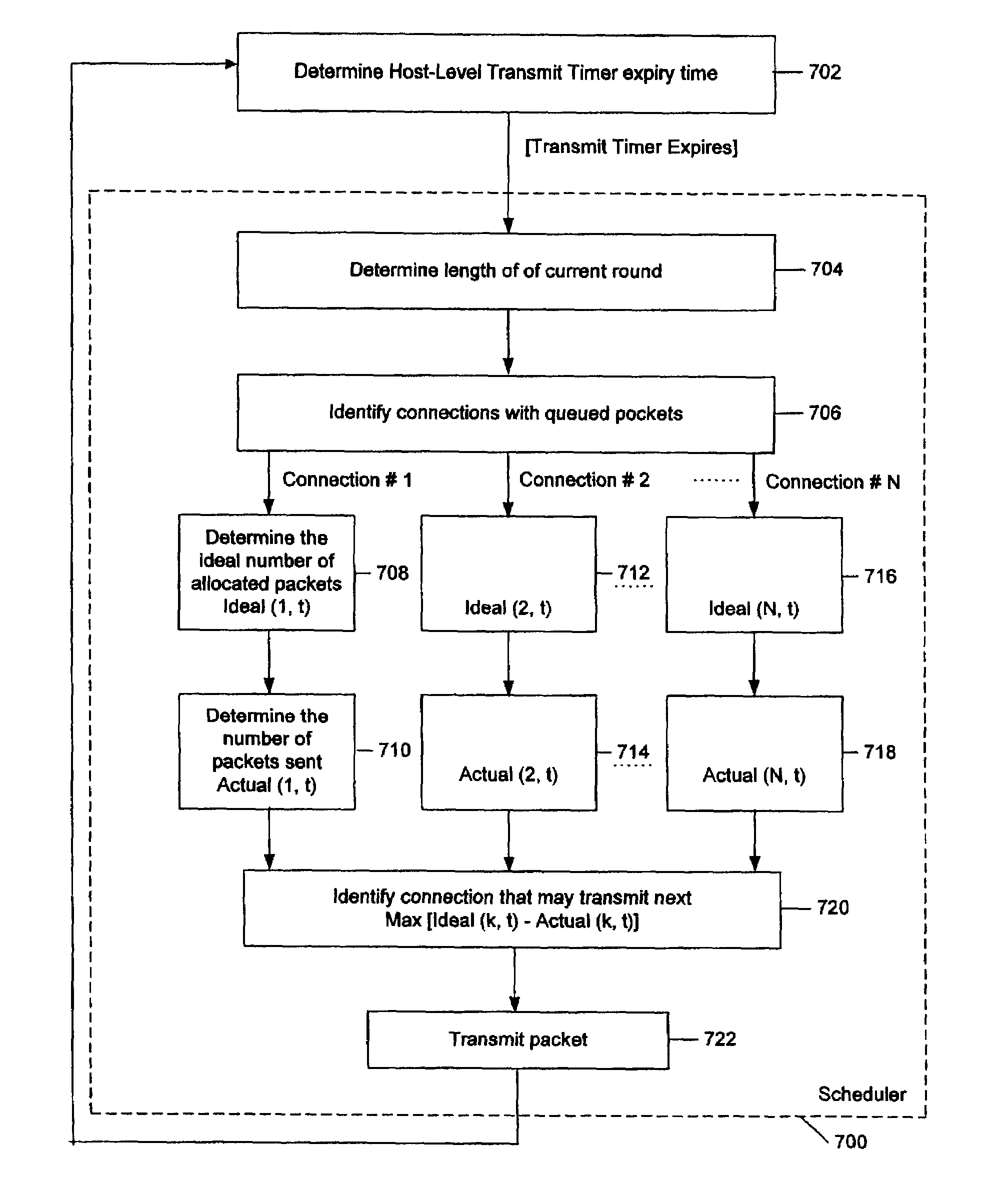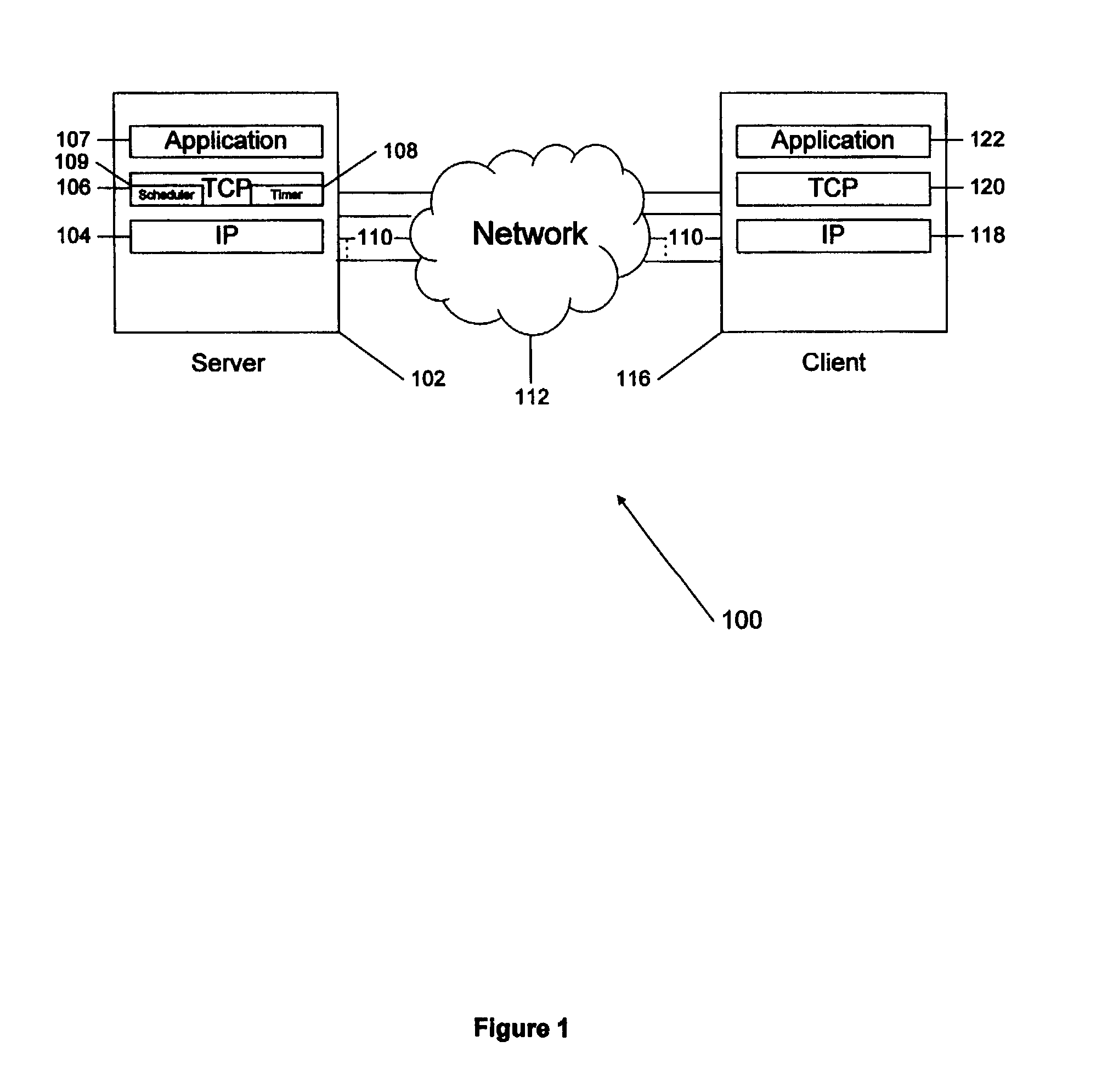Quality of service management for multiple connections within a network communication system
a network communication system and quality management technology, applied in the field of data communication protocols, can solve the problems of affecting the performance of applications requiring a steady flow of data, affecting the quality of service management, and exposing many of the limitations of a single design, etc., to achieve accurate or relevant estimates of the available bandwidth, reduce or avoid potentially destructive competition, and reduce or eliminate burst data transmissions
- Summary
- Abstract
- Description
- Claims
- Application Information
AI Technical Summary
Benefits of technology
Problems solved by technology
Method used
Image
Examples
Embodiment Construction
[0025]Aspects of the present invention provide systems and methods for quality of service management for multiple connections within a communications network. These aspects of the present invention provide improved coordination between multiple connections to a given host that share a common communication channel and provide improved efficiency of data transfer between devices connected via a communication network, such as a wireless and wireline network. The following description is presented to enable a person skilled in the art to make and use the invention. Descriptions of specific embodiments or applications are provided only as examples. Various modifications, substitutions and variations of embodiments will be apparent to those skilled in the art, and the generic principles defined herein may be applied to other embodiments and applications without departing from the spirit and scope of the invention. The present invention should therefore not be limited to the described or i...
PUM
 Login to View More
Login to View More Abstract
Description
Claims
Application Information
 Login to View More
Login to View More - R&D
- Intellectual Property
- Life Sciences
- Materials
- Tech Scout
- Unparalleled Data Quality
- Higher Quality Content
- 60% Fewer Hallucinations
Browse by: Latest US Patents, China's latest patents, Technical Efficacy Thesaurus, Application Domain, Technology Topic, Popular Technical Reports.
© 2025 PatSnap. All rights reserved.Legal|Privacy policy|Modern Slavery Act Transparency Statement|Sitemap|About US| Contact US: help@patsnap.com



